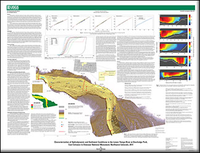The Yampa River in northwestern Colorado is the largest, relatively unregulated river system in the upper Colorado River Basin. Water from the Yampa River Basin continues to be sought for a number of municipal, industrial, and energy uses. It is anticipated that future water development within the Yampa River Basin above the amount of water development identified under the Upper Colorado River Endangered Fish Recovery Implementation Program and the Programmatic Biological Opinion may require additional analysis in order to understand the effects on habitat and river function. Water development in the Yampa River Basin could alter the streamflow regime and, consequently, could lead to changes in the transport and storage of sediment in the Yampa River at Deerlodge Park. These changes could affect the physical form of the reach and may impact aquatic and riparian habitat in and downstream from Deerlodge Park.
The U.S. Geological Survey, in cooperation with the Colorado Water Conservation Board, began a study in 2011 to characterize the current hydrodynamic and sediment-transport conditions for a 2-kilometer reach of the Yampa River in Deerlodge Park. Characterization of channel conditions in the Deerlodge Park reach was completed through topographic surveying, grain-size analysis of streambed sediment, and characterization of streamflow properties. This characterization provides (1) a basis for comparisons of current stream functions (channel geometry, sediment transport, and stream hydraulics) to future conditions and (2) a dataset that can be used to assess channel response to streamflow alteration scenarios indicated from computer modeling of streamflow and sediment-transport conditions.


